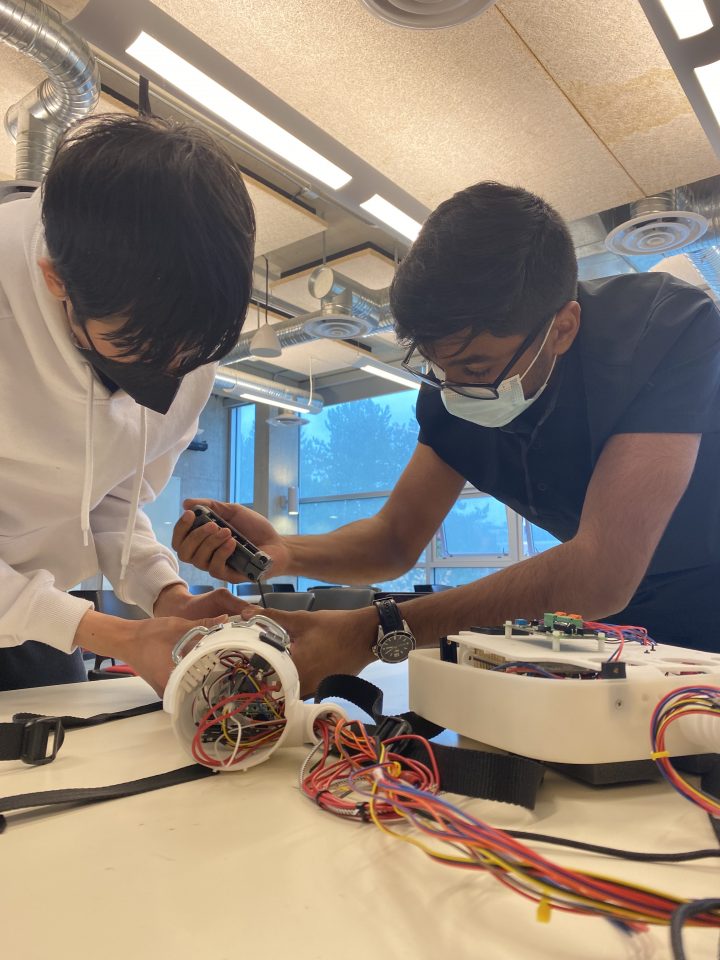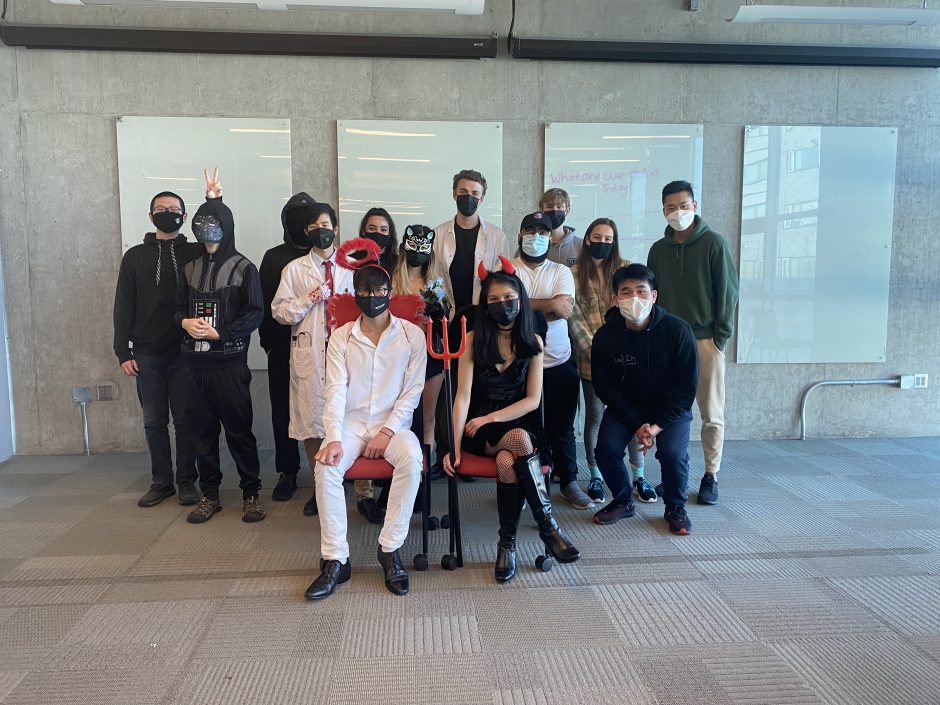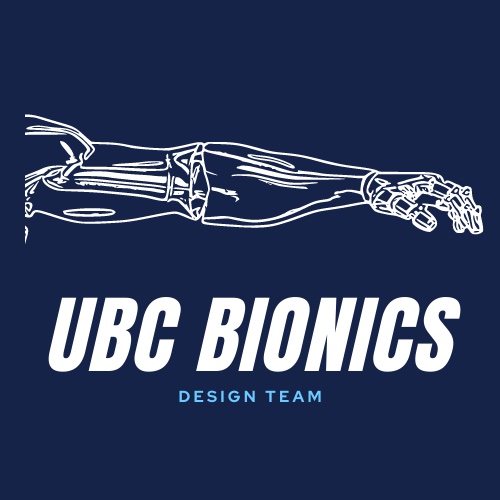
UBC Bionics was first formed in 2018 to create a space where students could apply all the skills they learned in class, and further develop their hands-on experience in the advancement of bionics. The group is an undergraduate engineering design team that aims to foster an environment that is readily accessible to students and provide a space for them to apply, strengthen, and hone their technical skills. They take pride in providing a very hands-on learning experience for all of their members, with support and guidance from senior leads.
The Department of Electrical and Computer Engineering was fortunate to connect with the Bionics team to discuss their accomplishments, how students can get involved, and some of the exciting work coming up this year!
Hi UBC Bionics! Tell us a bit about your team! How many students do you have, what do they do, and where are they from?
Our team currently has about 40 students, reaching all areas of STEM, including a plethora of engineering, computer science, biology, and chemistry students. We even have students from Sauder, and are open to applicants from all academic backgrounds! Since we operate with a top-down approach, we are able to take on a good number of 1st and 2nd year students who will then be trained and mentored by upper-year students.
ECE students on the UBC Bionics team are involved in a variety of tasks depending on which subteam they join. The Electrical subteam works on circuit design using CAD software, testing and doing plenty of hands-on work. The Embedded Software subteam works on system design, management and prioritization of tasks within our bionic arm, GRASP. ECE students joining the team can expect to gain a lot of experience in a team project setting, applying their technical skills in circuit design, learning new software programs, and relating ECE course content more specifically to bionics.
Why did you choose to join UBC Bionics in the first place?
We chose to join the team mainly because of the projects involved and its alignment with industry and research. A lot of other design teams do not have the same biology and technical integrations that you get with the bionics field. Being able to work with both sides and being involved in a relatively new team was also a significant factor in our applications to UBC Bionics.
As a part of the team you get to work on a lot of project development and get to see your impact on the project design clearly. You get a lot of practical experience building different aspects and can perform a lot of physical testing as prototypes come together. It is a great way to get into more complex work without the full risk or stress of employment/career and you gain a lot of experience, as well as a positive environment to learn in. It’s also a lot of fun and a great community.

Is there something you have learned that you wished you had known when you first began your undergrad program? What advice would you give your younger self?
We have a list of different things we wished we had known before we started, as well as advice we would give to our younger selves:
- Explore your interests and try different technologies, environments, or more broadly research and/or industry
- To join design teams earlier to get a sense of how different engineering programs work together to complete a project, even if it feels like a long shot
- Just try things! Explore it even if it’s outside of your comfort zone.
- Don’t be afraid to explore new topics
- Be a little stupid, but not over the top
- For designing software: Get hung up on the best way, rather than to go with the best solution and see how far it takes you. It doesn’t have to be the best solution the first time.
- The dumber the question the more important you ask!
Have there been any accomplishments that you and your team are most proud of?
One of our biggest accomplishments was the creation of our first prototype of GRASP. Being able to design, print, and test circuit boards as well as seeing everything connect to modules in the arm was an incredible achievement.
For the embedded team, setting up the pipeline communications in the system was a major step in our progress but Raestro is probably the achievement our sub team is most proud of. Raestro is an open source library that we have published on crates.io which controls the motors used in our bionic arm. We’re proud to report that as of August 6th, 2022, it has received 333 downloads.
What is one thing about your team that would make someone laugh or impress them?
One of the coolest parts of our team is our access to opportunities outside of the APSC/UBC space. We have a research subteam that works in collaboration with research labs at UBC and gives students the chance to experience working in academia and network with professionals. Our access to information from APSC and EDT has led to an invitation to the ASEE 2022 annual conference on integrating equity, diversity, and inclusion into our team’s culture-that was a really great chance to network and meet others in the industry and discuss issues that we face in STEM! Of course, there’s a lot of community outreach as well that we can accomplish as a team–we make an effort to attend Open Houses and collaborate with other youth programs on workshops that introduce engineering to younger and even prospective students.
On a sillier note though, for our first prototype of the arm we were able to successfully get Netflix and Minecraft running on the graphical user interface (GUI). To explore functional near-infrared spectroscopy (FNIR) from the electrical side, we modeled it using Minecraft redstone mode. We have also made Excel spreadsheets to decide on team lunch options!

Do you feel that your experience on the team is helping you prepare for life after university/in your career? How so?
Definitely! When applying for CO-OP positions and other jobs, we have been able to carry over practical experience we gained from the design team. We’ve also been able to experience working in a cross-disciplinary team and have networked with individuals in the field. Lastly, working in an environment that requires some self-learning has helped us apply new techniques for our learning and use that knowledge during project development.
Awesome! Thanks for taking the time to talk with us! To wrap up, how can others join the team or get in touch with you if they are interested in learning more?
Applicants can find more information about our team at ubcbionics.com or on our social media platforms (Instagram, Facebook, LinkedIn, & Twitter) at @ubcbionicsteam. Interested individuals can also reach out to us at ubcbionicsteam@gmail.com with any inquiries! Our team is active in the UBC and APSC community, and can often be found at Imagine Day, as well as at Open Houses.
